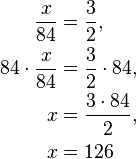In music a metric modulation is a change in pulse rate (tempo) and/or pulse grouping (subdivision). Most generally a change of time signature, the term metric modulation is more specifically applied to a change (modulation) from one time signature/tempo (meter) to another, wherein a note value from the first is made equivalent to a note value in the second, like a pivot or bridge. The term metrical modulation, first used by Richard Franko Goldman (1951) while reviewing Carter's Cello Sonata (Schiff 1998, 23), was invented to describe the practice of Elliott Carter, who prefers to call it tempo modulation.
A technique in which a rhythmic pattern is superposed on another, heterometrically, and then supersedes it and becomes the basic meter. Usually, such time signatures are mutually prime, e.g., 4/4 and 3/8, and so have no common divisors. Thus the change of the basic meter decisively alters the numerical content of the beat, but the minimal denominator (1/8 when 4/4 changes to 3/8; 1/16 when, e.g., 5/8 changes to 7/16, etc.) remains constant. —Nicolas Slonimsky (Kostelanetz 2001, 407)For metric modulation to exist 3 things have to occur:
- There has to be an exact relationship between two different tempi
- A common pulse must be created these two tempi
- The name and function of the pulse changes.
The following formula illustrates how to determine the tempo before or after a metric modulation, or, alternatively, how many of the associated note values will be in each measure before or after the modulation:
- (Winold 1975, 230-31)
Thus if the two half notes in 4/4 time at a tempo of quarter note = 84 are made equivalent with three half notes at a new tempo, that tempo will be:

- (Winold 1975, p.230, example taken from Carter's Eight Etudes and a Fantasy for woodwind quartet (1950), Fantasy, mm. 16-17.)
Note that this tempo, quarter note = 126, is equal to dotted-quarter note = 84 (( = .) = ( = .)).
A tempo (or metric) modulation causes a change in the hierarchical relationship between the perceived beat subdivision and all potential subdivisions belonging to the new tempo. Benadon (2004) has explored some compositional uses of tempo modulations, such as tempo networks and beat subdivision spaces.
Three challenges arise when performing metric modulations:
- Grouping notes of the same speed differently on each side of the barline, ex: (quintuplet =sextuplet ) with sixteenth notes before and after the barline
- Subdivision used on one side of the barline and not the other, ex: (triplet =) with triplets before and quarter notes after the barline
- Subdivision used on neither side of the barline but used to establish the modulation, ex: (quintuplet =) with quarter notes before and after the barline
- (Weisberg 1996, 54)
Examples of the use of metric modulation include Carter's Cello Sonata (1948) (Cunningham 2007, 113), A Symphony of Three Orchestras (1976) (Farberman 1997, 158), and Björk's "Desired Constellation" (.=) (Malawey 2007, 142-44).
Read more about Metric Modulation: Score Notation
Famous quotes containing the word modulation:
“Every accent, every emphasis, every modulation of voice, was so perfectly well turned and well placed, that, without being interested in the subject, one could not help being pleased with the discourse; a pleasure of much the same kind with that received from an excellent piece of music. This is an advantage itinerant preachers have over those who are stationary, as the latter can not well improve their delivery of a sermon by so many rehearsals.”
—Benjamin Franklin (1706–1790)